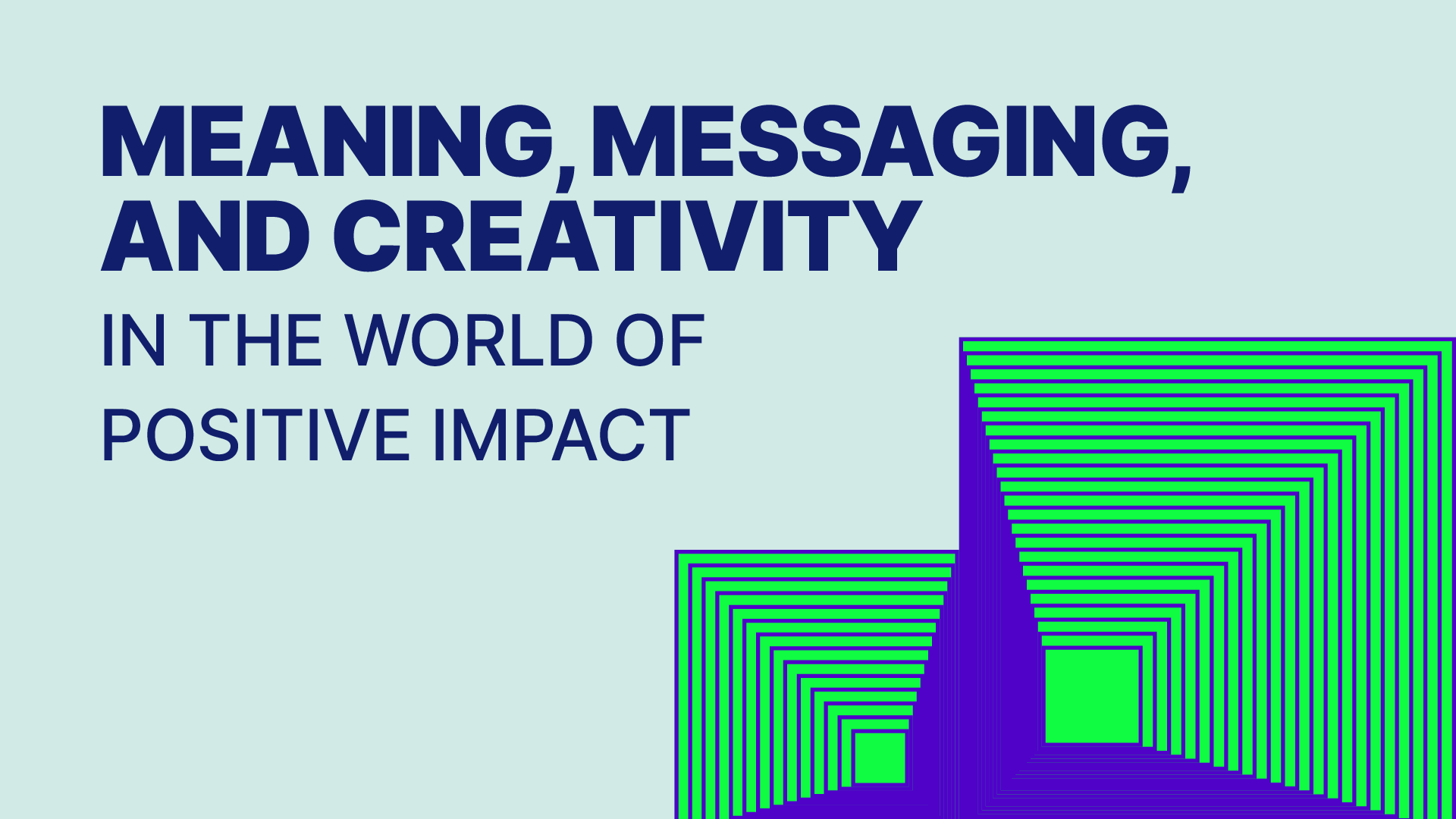Big Blue Content and Communications Specialist Zarif Faiaz talks with Director Sajid Chowdhury. They discuss meaning, messaging, and carving space for creativity in the world of positive impact. They explore the cynicism of the mob, cultural innovation, and the future of storytelling.
Where does the work feel exciting right now?
Definitely the international nature of the work. Right now, we have projects in Malaysia, Bangladesh, Thailand, and the UK. We experience so many varying perspectives, literally hourly. What works in one context does not elsewhere. That is fascinating. Meaning messaging and design are influenced by culture, context, and people.
The other thrill is partnerships with people on the leading edge of their fields.
Within this world of positive impact, where are the most exciting areas for digital and creative experts?
The subject matter. You are exposed to big issues. You can apply your craft to amazing subject matter and also learn about the world. People like content writers and researchers learn directly about the major issues of our time. They bring respect, introspection, humility, and hopefully also kindness.
You mentioned partnerships. How do partnerships with positive impact organizations fit into the work?
Great partnerships make meaning. The best work experiences are based on trust and excitement. Maybe the funding for a particular project is not huge. Or maybe the project environment is uncertain. But that is OK when partnered with people who value creativity, innovation, and teamwork. Now, if you have a great partnership, and also a project environment that is particularly receptive to change, then you really have a recipe for magic.
The truth is that ‘communications’ or ‘creative’ people are not necessarily always the source of great campaigns and creative ideas. They are often a facilitator, vehicle, or lead, but not the only source. A banker, scientist, teacher, or bartender often has a very unique, valuable perspective. Actually, the blending of perspectives is often where magic happens. That is one reason why communicators should expose themselves to new ideas. They should stay on top of the spirit of the times, technology, and the theory and practice in their industry.
What big, world-sized challenges is Big Blue chasing in the coming future?
A few. Definitely water. That is a big one. As communicators, we could actually dedicate our entire careers only to issues of water. Water management, sustainability, and scarcity. There are so many crises, and therefore, opportunities. For me, personally, the desire to support water-related issues is something that I cannot quite explain. It relates to a connection to the ocean and water, something on the edge of the imagination. But maybe the edges of imagination are sometimes where purpose comes from. Water is even in our company name! We have been working with an organization called WorldFish, guiding their messaging and design. That work means so much to me personally.
Another challenge is opportunities for women and girls. Like water, it is one of these hugely important issues. These issues are in humanity’s source code. If you can change the source code, you can change humanity. How the world creates opportunities for women and girls is one of those big macro determinants of our era’s success. Past generations are judged by how they treated women. One big question that we can use to mark humanity’s progress is what changes in the treatment of women and girls happened in our lifetime. How did we update a narrative? What cultural shift did we support?
Where are messaging, communication, and storytelling going in the world of positive impact? What trends are happening? Where are changes happening?
Stories are a tool. They are not necessarily good. Nazis had a powerful motivating story. Storytelling to big audiences (and small audiences, too) is a powerful skill to wield with care.
Even billionaires who dodge taxes and abuse workers create their own struggle stories. People are increasingly wary, maybe even cynical, of the story. That has benefits. Society should, after all, be more analytical and discerning. We need more authentic, less varnished, more frank communication and stories.
Storytelling has been scienced beyond belief. That is one reason movie trailers always seem to fall into one of a few categories. The TED talk phase had its pros and cons. I think the future of storytelling and creative communication is in finding new angles and perspectives. That might involve removing the polish from stories, and instead focusing on authenticity. It might involve going to unexpected places and people for those stories.
What do you say to people in the positive impact space whose work has the potential to improve lives? What is the potential role of creativity, communication, and storytelling in their work? And by association, what space is there for partnerships with digital and creative experts?
It depends very much on the space that you are in. For instance, some areas see a lot of campaigning, media attention, lobbying, and fundraising. Those spaces depend actively on creatives, marketers, and storytellers.
But let’s not forget those other large sectors where fascinating research, data collection, and on-the-ground work is happening. There are technical specialists and funders who are definitely warier of investing in communications, campaigns, and storytelling. The world should not ignore those spaces. We can help those people to take chances, to be bold, to have a voice and an angle.
That might be scary for them. Putting yourself out there can feel scary. But of course, if done well, it creates rewards. There are many researchers and scientists who have brought attention to their life-changing work because they invested belief in creativity, communication, and story.
Again, we come back to that importance of great partnerships. There is so much value in the hybridization of ideas, and the willingness to find new angles and perspectives.

